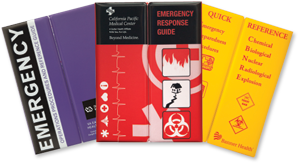Written by: Zaz Hollander, Anchorage Daily News, Alaska
(TNS) – Dave Scordino worked the previous night shift as the medical director of the Alaska Regional Hospital emergency department and was playing outside with his children before heading back to work this week.
Actually, he was still working — on call for his part-time job with the state helping ease capacity strain on health care facilities around Alaska.
Ongoing staff shortages and weeks of higher COVID-19 patient numbers are placing an additional burden on the big Anchorage hospitals that normally take most of the state’s patient transfers. Rural facilities report challenges transferring people for higher levels of care or more oxygen — COVID-positive patients use incredibly high amounts of oxygen — to the point that at least one patient died before getting care elsewhere.
Some states such as Nebraska have stood up contracted hospital call centers to help with patient transfers.
In Alaska, Scordino is a sort of one-man state hospital transfer call center.
He’s helped put together new systems to allow hospitals to send out patients and accept them. He also fields calls from outlying hospitals with urgent transfer challenges.
That aspect of the job is part problem solving, part space making.
Does a patient in a rural hospital need dialysis or neurosurgery? If so, that’s only available in Anchorage. But if one of the big hospitals in the city is already full, then he may need to coordinate “back haul” transfers of medically stable patients to a rural hospital to free up beds.
“You’re talking about sometimes moving multiple patients or back hauling patients to another facility, which is not normal transport mode,” Scordino said.
These are not normal times for Alaska’s hospitals.
Twenty health care facilities across the state have activated crisis standards of care, giving them the option to prioritize care for patients most likely to survive if scarce resources make that decision necessary. State officials also requested 470 federally contracted health workers to relieve exhausted employees around Alaska, many of whom have already started arriving in the state.
The situation is prompting novel workarounds to make sure patients get care. That includes medevacs of patients from Anchorage hospitals to rural health care facilities — instead of the other way around, which is what usually happens — as well as using Fairbanks Memorial Hospital or Mat-Su Regional Medical Center to take transfers because Anchorage hospitals are full.
The three big hospitals in Anchorage have had transfer centers for years and are working more closely together under the current strain to collaborate instead of compete, Scordino said.
“Now if one hospital doesn’t have a bed, they’re encouraged to work together to help figure out who does have a bed,” he said.
Last month, he was on the phone with a doctor at Dillingham’s Kanakanak Hospital.
Several COVID-19 patients needed high amounts of oxygen, so he helped get them transferred to Anchorage and facilitated the transfer to Kanakanak of a few less severely ill patients to free up beds in town.
The transfer help is appreciated, said a spokesperson for hospital operator Bristol Bay Area Health Corp.
“We’re very grateful for it. It’s working,” Jennifer De Winne said last week. “We’re still in not a great situation across the state but that’s very helpful.”
Scordino this week said he’s provided similar assistance for four or five facilities in different parts of the state in recent weeks.
He was hired about a year ago to spearhead the state’s response to concerns the pandemic could overwhelm Alaska’s fragile hospital capacity. Scordino, who’s been in Alaska for five years, did a fellowship in disaster medicine and got a master’s degree in public health, both at Johns Hopkins University.
His job includes multiple duties, state officials say.
Scordino last year helped develop the online hospital status dashboard that shows which facilities are open or closed. He worked with hospitals in Juneau, Fairbanks and Mat-Su that aren’t usually involved in patient transfers to receive patients and take the pressure off Anchorage. He monitors medevacs in state as well as the transfer picture to Seattle and Portland, which seems to be improving. He checks in with hospitals in Anchorage and often Fairbanks, Mat-Su or on the Kenai Peninsula a few times a week.
These days, he’s on the daily hospital “huddle” calls the state initiated last month to address bed availability. He also serves on the state crisis care committee.
“On a recent call this week, hospitals across the state were thanking Dr. Scordino for helping to coordinate some patient transfers,” Heidi Hedberg, state public health director, said in an email. “Dr. Scordino is well respected and engaged with the hospitals as they are working through limited bed availability for critical care.”
His job as a health care coalition clinical adviser — “We just refer to him as a staff physician,” Hedberg says — is funded through a federal grant from the Hospital Preparedness Program.
Scordino is helping provide a link between each facility without ramping all the way to a call center, said Jeannie Monk, senior vice president of the Alaska State Hospital and Nursing Home Association.
“The idea of standing up a statewide transfer center is kind of a daunting task and isn’t necessarily what the individual facilities want,” Monk said. “So many decisions are really about clinician-to-clinician discussions made in the context of a trusting relationship. You really have to understand, what is a facility’s capability? That can vary day by day, hour by hour.”
Scordino has never been to any of the more faraway health care facilities he’s worked with, which includes the remote Akutan clinic during a major COVID-19 outbreak early this year at the massive Trident Seafoods plant.
“That’s the best part,” he said. “I’ve wandered around the state a bit (but) I have not been to a single other hospital besides the ones in Anchorage.”
He hopes to meet some of the people he’s helped by phone someday soon.
___
(c)2021 the Alaska Dispatch News (Anchorage, Alaska)
Visit the Alaska Dispatch News (Anchorage, Alaska) at www.adn.com
Distributed by Tribune Content Agency, LLC.
This article appeared on Emergency Management News and is shared with consent:
https://www.govtech.com/em/preparedness/meet-anchorages-one-man-state-hospital-transfer-center







